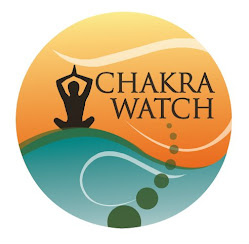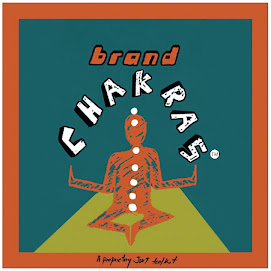Chakra Watch 2: Survival, Pleasure, Power, Love, Creative Expression, Transcendence, Spirituality – these are the seven basic life themes, based on the seven major charkas in the human body, that drive all human behaviour
From a culture that was more preoccupied with the past and the future, and a background where denial of pleasure was considered noteworthy, India today is fully living in the “now”. Increasingly, Indians are reflecting an intense urge to milk maximum happiness from each living moment. At their own levels and in their own way, people in different sections of society are finding ways to live life more fully than ever before. “We don’t know what tomorrow will bring, might as well enjoy today” is a common refrain. And when asked to share good moments in focus group discussions, people often come up with smaller, “made-my-day” kind of joys than big, life changing moments.
Pleasure Chakra people are generally people who have had fairly privileged upbringings and wish to live life without feeling bogged down. Impulsive, excitable, they are in constant search for higher levels of materialistic living, curious living and rich experiences. There is a tendency to shrug off accountability and disregard commitments. The inability to control cravings and putting one’s own feelings ahead of others are some of the “imbalanced” traits of Swaddisthana or Pleasure Chakra people. They take pride in themselves and what they have and like to enjoy their belongings. Manipulation, selfishness, jealousy, greed, flaunting wealth have all come out of the closet and in fact there is a celebration of the seven deadly sins, as it were. Light hearted advertisements now reflect a “it’s fun to be bad” attitude.
The other big themes in this chakra are laughter, anxiety about attractiveness, sexuality, and luxurious living. And so is “physical creativity” or creativity of a lower order—say, beautiful homes as against higher order creativity like painting, sculpting, writing which would be Throat Chakra activities since they involve, in their own way, a larger search for truth. Little day-to-day acts of creativity, from candle making to puppetry are Pleasure Chakra activities.
Sexuality, the need for appreciation, the need to feel attractive and develop a magnetic personality are also Pleasure Chakra needs. Aneroxia, and the need for surgical intervention to look beautiful, imply an excess of Pleasure Chakra, while disinterest in sex would imply deficiency and an inability to derive pleasure. Clearly, seven-day beauty miracles, six-week skin solutions, Viagra, perfumes and deos that have the whole female population following you, six-pack abs and beauty diets cater to Pleasure Chakra needs! Romantic love is a Pleasure Chakra need as against universal love and sympathy which are Heart or Love Chakra qualities.
Swaddisthana brands therefore cater to anxiety about attractiveness and the need for escape. They add positivism, magnetism, and joy to living, and partner in the pursuit of pleasure. So key brand payoffs that appeal to and arise out of Swaddisthana people and their needs include payoffs like: creates the desire to try new things, makes me feel attractive, reduces my anxiety about attractiveness, brings me appreciation, fills me with vitality and joy, makes me laugh, helps me make people do what I want, permits me to be manipulative and devious, makes me happy with myself so that I don’t have to be jealous of others, brings me sexual pleasure, reflects my passionate nature, helps me enjoy life at every opportunity, and encourages me to experiment and try new activities.
All beauty brands, perfumes and deos, many apparel brands, FM radio, laughter shows, confectionery brands, ice creams and some foods which offer lip smacking taste (and not nourishment) would all be using Pleasure Chakra promises. Walls ice creams, Cadbury’s Temptations, juicy soft drinks come to mind. As also “I am worth it”—the feeling that I deserve to be happy. Breakaway weekends, exotic holidays, the desire to try everything from new foods to white water rafting are Pleasure Chakra activities.
Films like Devdas and love stories fall here, as would Jab We Met, and the whole genre of all those sweet, light hearted Hollywood romantic comedies. While a “message comedy” like Munnabhai would end up as a combination of pleasure (humour) with a combination of transcendence (third eye) because off its higher order point of view, with shades of Heart or Love Chakra qualities that it advises.
In a random population sample Brand Chakras™ survey of Indians in general, women showed a higher level of pleasure seeking, willingness to be devious, seeking appreciation, and jealousy at others happiness. Younger people recorded higher pleasure scores, as did people in Delhi and Mumbai. However Delhi-ites and Mumbaikars also showed a higher need to do a lot more in life before they can be happy with themselves, and would go to any extent to get their way.
Pleasure scores went up with income. Lower income people were predictably lower on pleasure and felt less deserving of being happy. Interestingly, people with income above a certain point felt more need to be jealous, devious, and more demanding of themselves before they can be happy. After all, figuring out whose plane is bigger and whose party was more extravagant, finding unique exotic holiday destinations every time, and searching for high end brands that cost the earth can be taxing!
From a culture that was more preoccupied with the past and the future, and a background where denial of pleasure was considered noteworthy, India today is fully living in the “now”. Increasingly, Indians are reflecting an intense urge to milk maximum happiness from each living moment. At their own levels and in their own way, people in different sections of society are finding ways to live life more fully than ever before. “We don’t know what tomorrow will bring, might as well enjoy today” is a common refrain. And when asked to share good moments in focus group discussions, people often come up with smaller, “made-my-day” kind of joys than big, life changing moments.
Pleasure Chakra people are generally people who have had fairly privileged upbringings and wish to live life without feeling bogged down. Impulsive, excitable, they are in constant search for higher levels of materialistic living, curious living and rich experiences. There is a tendency to shrug off accountability and disregard commitments. The inability to control cravings and putting one’s own feelings ahead of others are some of the “imbalanced” traits of Swaddisthana or Pleasure Chakra people. They take pride in themselves and what they have and like to enjoy their belongings. Manipulation, selfishness, jealousy, greed, flaunting wealth have all come out of the closet and in fact there is a celebration of the seven deadly sins, as it were. Light hearted advertisements now reflect a “it’s fun to be bad” attitude.
The other big themes in this chakra are laughter, anxiety about attractiveness, sexuality, and luxurious living. And so is “physical creativity” or creativity of a lower order—say, beautiful homes as against higher order creativity like painting, sculpting, writing which would be Throat Chakra activities since they involve, in their own way, a larger search for truth. Little day-to-day acts of creativity, from candle making to puppetry are Pleasure Chakra activities.
Sexuality, the need for appreciation, the need to feel attractive and develop a magnetic personality are also Pleasure Chakra needs. Aneroxia, and the need for surgical intervention to look beautiful, imply an excess of Pleasure Chakra, while disinterest in sex would imply deficiency and an inability to derive pleasure. Clearly, seven-day beauty miracles, six-week skin solutions, Viagra, perfumes and deos that have the whole female population following you, six-pack abs and beauty diets cater to Pleasure Chakra needs! Romantic love is a Pleasure Chakra need as against universal love and sympathy which are Heart or Love Chakra qualities.
Swaddisthana brands therefore cater to anxiety about attractiveness and the need for escape. They add positivism, magnetism, and joy to living, and partner in the pursuit of pleasure. So key brand payoffs that appeal to and arise out of Swaddisthana people and their needs include payoffs like: creates the desire to try new things, makes me feel attractive, reduces my anxiety about attractiveness, brings me appreciation, fills me with vitality and joy, makes me laugh, helps me make people do what I want, permits me to be manipulative and devious, makes me happy with myself so that I don’t have to be jealous of others, brings me sexual pleasure, reflects my passionate nature, helps me enjoy life at every opportunity, and encourages me to experiment and try new activities.
All beauty brands, perfumes and deos, many apparel brands, FM radio, laughter shows, confectionery brands, ice creams and some foods which offer lip smacking taste (and not nourishment) would all be using Pleasure Chakra promises. Walls ice creams, Cadbury’s Temptations, juicy soft drinks come to mind. As also “I am worth it”—the feeling that I deserve to be happy. Breakaway weekends, exotic holidays, the desire to try everything from new foods to white water rafting are Pleasure Chakra activities.
Films like Devdas and love stories fall here, as would Jab We Met, and the whole genre of all those sweet, light hearted Hollywood romantic comedies. While a “message comedy” like Munnabhai would end up as a combination of pleasure (humour) with a combination of transcendence (third eye) because off its higher order point of view, with shades of Heart or Love Chakra qualities that it advises.
In a random population sample Brand Chakras™ survey of Indians in general, women showed a higher level of pleasure seeking, willingness to be devious, seeking appreciation, and jealousy at others happiness. Younger people recorded higher pleasure scores, as did people in Delhi and Mumbai. However Delhi-ites and Mumbaikars also showed a higher need to do a lot more in life before they can be happy with themselves, and would go to any extent to get their way.
Pleasure scores went up with income. Lower income people were predictably lower on pleasure and felt less deserving of being happy. Interestingly, people with income above a certain point felt more need to be jealous, devious, and more demanding of themselves before they can be happy. After all, figuring out whose plane is bigger and whose party was more extravagant, finding unique exotic holiday destinations every time, and searching for high end brands that cost the earth can be taxing!
This post first appeared as an article in brand wagon, The Financial express, Mar 4, 08

